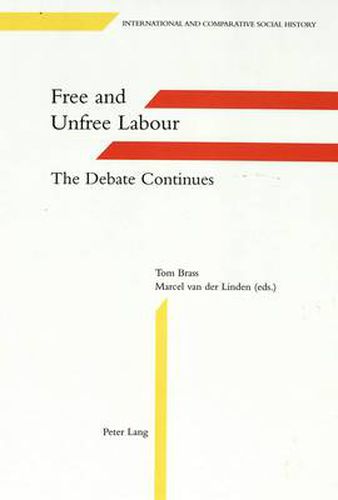Readings Newsletter
Become a Readings Member to make your shopping experience even easier.
Sign in or sign up for free!
You’re not far away from qualifying for FREE standard shipping within Australia
You’ve qualified for FREE standard shipping within Australia
The cart is loading…






Historically, capitalism has always integrated various forms of unfree labour, including chattel slavery, convict labour and debt bondage. Contrary to purported wisdom, these forms of exploitation have not disappeared during the twentieth century. Fascist and Stalinist dictatorships used forced labour on a massive scale, while unfree labour has been increasing in several parts of the world in recent years. Labour historians have traditionally somewhat neglected the problem of coerced labour. Focusing on so-called free wage labourers, their living conditions, cultures and struggles, they implicitly supposed a more or less unilinear development from unfree to free labour to have taken place under the influence of emerging capitalism, gradually encompassing the globe. The present collection of 24 essays attempts to rethink these issues. The volume is divided into two sections: the first deals with theories about unfree labour while the second consists of case studies examining its presence or absence in particular historical contexts in the first, second and third world. The authors use various Marxist or neoclassical approaches and disagree on four substantive points: the market, labour scarcity, gender and state intervention. These crucial differences are explored and clarified. The debate continues.
$9.00 standard shipping within Australia
FREE standard shipping within Australia for orders over $100.00
Express & International shipping calculated at checkout
Historically, capitalism has always integrated various forms of unfree labour, including chattel slavery, convict labour and debt bondage. Contrary to purported wisdom, these forms of exploitation have not disappeared during the twentieth century. Fascist and Stalinist dictatorships used forced labour on a massive scale, while unfree labour has been increasing in several parts of the world in recent years. Labour historians have traditionally somewhat neglected the problem of coerced labour. Focusing on so-called free wage labourers, their living conditions, cultures and struggles, they implicitly supposed a more or less unilinear development from unfree to free labour to have taken place under the influence of emerging capitalism, gradually encompassing the globe. The present collection of 24 essays attempts to rethink these issues. The volume is divided into two sections: the first deals with theories about unfree labour while the second consists of case studies examining its presence or absence in particular historical contexts in the first, second and third world. The authors use various Marxist or neoclassical approaches and disagree on four substantive points: the market, labour scarcity, gender and state intervention. These crucial differences are explored and clarified. The debate continues.